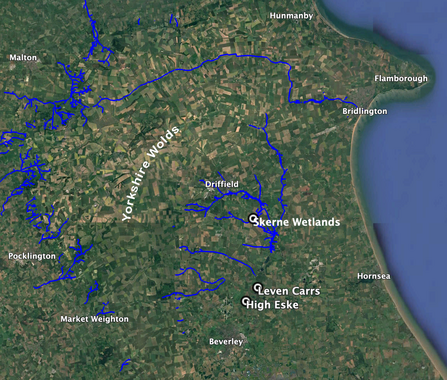Conversations about Conservation
Amongst the many things I am enjoying about being a YWT volunteer is the opportunity to meet like-minded people, learn from them, and share my own experiences about wildlife and nature conservation.
This is exactly what YWT's Discovery Days are all about, as Marie Fooks, Volunteering Support Manager, explained to an audience of some 25 members of the volunteer community who had gathered on a bright and breezy day in late February. We'd been brought together to learn about one of the real gems amongst Yorkshire's mix of natural habitats - the Chalk Stream.
Fortunately for us all, Jon Traill, Living Landscapes Manager and Calum Rae, Project Officer for the Wolds & Holderness were on hand to share their considerable knowledge of chalk streams and the work being done by the Trust, its partners and its volunteers to look after them.
First it fell to Marie to set the day up by inviting us to pair up and introduce ourselves to each other. Something I've learned from the wonderful group of YWT volunteers I work with is that they do like to chat, and so it was no surprise that the meeting room was soon filled with a hubbub of conversations. New connections were made, and old ones renewed....It turned out that Paul, who I got talking to, started out his birding life at some of the same spots in Hampshire as I did. Happy days !















